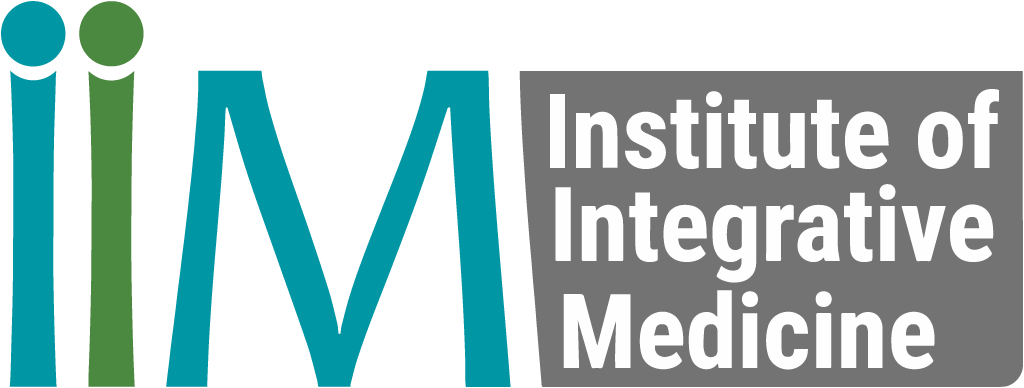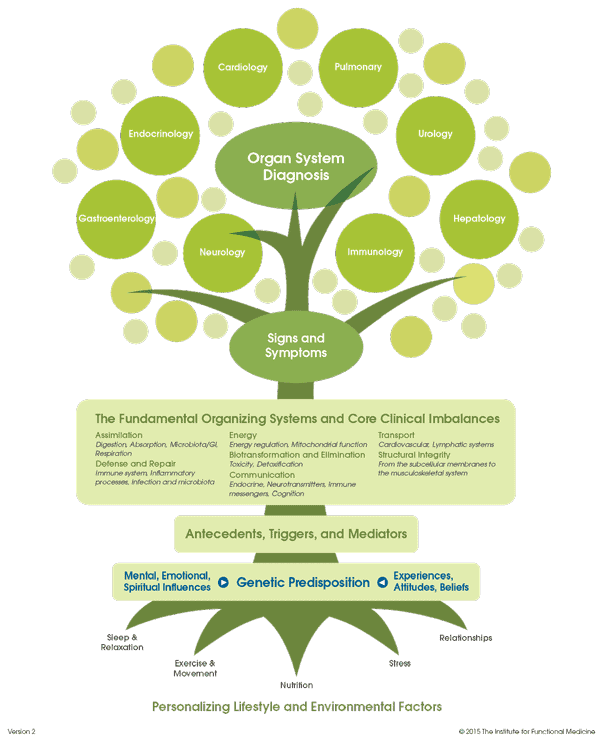An introduction to Genetic Testing
There are a variety of different theories as to why SNP frequencies aggregate at these minor allele levels. And, generally, it is thought to be a result of the balance between mutation and genetic drift. And this is referred to in the natural theory of molecular evolution.
There are many medical and health professionals that fall under the umbrella of Integrative Medicine and Healthcare. At the core of functional/integrative medicine is the patient’s wants and needs.
As a health professional, it is our job to effectively diagnose, treat, manage and prevent chronic illness. This is where a more holistic, patient-centered approach to medicine is needed. Genetic testing can help facilitate a more effective and personalised means of treatment and prevention protocol.
Generally DNA consists of 8 packaging proteins called histones. These positively charged proteins adhere to the negatively charged DNA, where they form complexes called nucleosomes.
These nucleosomes are composed of DNA (about 150 base pairs) and they wind around these histones about 1.6 times. Nucleosomes fold to form chromatin fibre. They fold again to form the chromatids of the chromosomes that we have. We then end up with the 23 chromosome pairs, which are located inside the nucleus of the cell.
What happens when the chromosomes are at their most compacted state with Genetic Testing?
When the chromosomes are at their most compacted state, it is called metaphase. The packing ratio of linear DNA to metaphase is approximately 10000:1, that would be akin to taking a rope as long as a rugby field and then folding it up to be less than about 1.5 cm.
Each of us have around 3 billion pairs of DNA nucleotides. This consists of the sugar molecule (ribose in RNA or deoxyribose in DNA), and that’s attached to a phosphate group and a nitrogen-containing base. And these bases in DNA are; adenine, thymine, guanine and cytosine. It is the essential basis in which the genomic code is written, which is the set of rules that allow us to translate information into proteins.
Genetic information flows from DNA to mRNA via the process of transcription. From then on mRNA is further processed by the translational machinery to form proteins. At the foundations of molecular biology is the genetic code. This code consists of triplet nucleotide sequences called codons, which encode for each particular amino acid. During genetic testing this will be done.
The sequence of these codons dictate, to the ribosome machinery, which amino acids will be linked together to form a specific protein. The genetic code consists of about 64 different codons, each of which codes for 1 of the 20 amino acids that we use in our bodies. Basically, that results in the properties that our genetic code has, which is degeneracy, but of non-ambiguity in genetic testing.
Single Nucleotide Polymorphism (SNP)
An SNP is defined as a single nucleotide base change in the DNA sequence that occurs in a significant portion (more than 1%) of a large population. Mutations and SNPs are the same in quality (meaning that they are both alterations), but they differ in quantity. Mutations generally have frequencies in populations well below 1%. And SNP have frequencies that are a bit higher. These SNPs are then further broken down into subcategories.
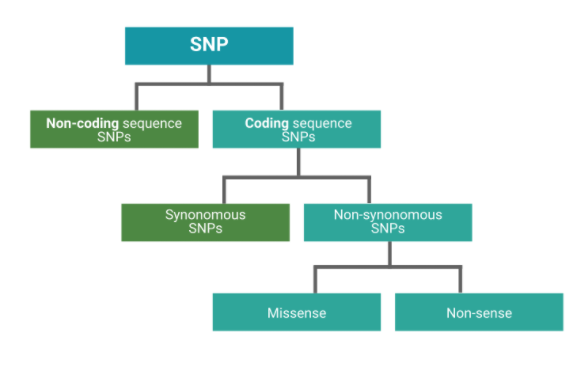
Why do SNPs aggregate at minor allele levels?
There are a variety of different theories as to why SNP frequencies aggregate at these minor allele levels. Generally, it is thought to be a result of the balance between mutation and genetic drift. This is referred to in the neutral theory of molecular evolution.
The difference between an allele and an SNP
An allele is, basically, a variant form of a given gene or SNP. Meaning it is one of two or more (but mostly two) versions of a known alteration at the same place of a chromosome.
Simply put, SNP describes the location, while an allele describes the different version of that alteration. If you go through the SNP database, you’ll generally see two different alleles. Some SNPs do have three alleles but that would be in the minority.
Homozygous and heterozygous
Homozygous means that you have two copies of the same allele to the same variant for that gene. Heterozygous means that you have two different alleles for a given gene (one from the mother and one from the father).
Genetics have a huge role to play in how we look and function. This being said, they also determine the likelihood of developing a disease. They are the warehouse of information used to build and maintain cells, and well as dictate what traits get passed along.
The question is, why not use this information and study it in order to direct our patients in a manner that will determine a better future for them? As our knowledge of the inner workings of the human body expands, so do the capabilities of modern medicine.
How do genes influence health?
Genetic testing and disease
Genetics have a huge role to play in how we look and function. This being said, they also determine the likelihood of developing a disease. They are the warehouse of information used to build and maintain cells, as well as dictate what traits get passed along. The question is, why not use this information and study it in order to direct our patients in a manner that will determine a better future for them? As our knowledge of the inner workings of the human body expands, so do the capabilities of modern medicine.
Clinicians are able to use a variety of genetic tests in order to improve a patient’s health status, or prevent disease. As mentioned above, by looking at gene sequences, we are able to predict the predisposition of chronic disease and illness. Many diseases are related to genetic mutations in single genes, and can be worsened by lifestyle and environmental factors. Analysing these precursors is vital in understanding the causes and aggravators of chronic illness.
The human genome consists of thousands of genes (approximately 30 000). Thus, the methodologies used to identify genes that are linked to disease are complicated and require a variety of steps. Looking at family history can play a key role in understanding the risk of developing a certain disease, as we inherit a complete set of genes from both parents. This is because our exposure to environmental factors, lifestyle, gene sequencing and experiences are directly related to our family (namely, our parents and siblings).
Uses of genetic testing
Pharmacogenomics and pharmacogenetics
It is well known that different people have varying reactions to a particular drug. For example, patient A might react well to a psychoactive ingredient, as opposed to patient B who would have a negative reaction to the same ingredient. Active ingredients are ingested, and then distributed to the body where cells interact with the drug and metabolise it further. Our ability to metabolise a particular drug differs from person to person. This is where pharmacogenetics and pharmacogenomics comes into play.
Pharmacogenetics is the study surrounding the genetic differences in single genes and how they influence a person’s ability to metabolise a drug. Whereas pharmacogenomics studies whole genome differences in multiple genes and multiple SNPs and how they influence variability in the drug response. It is that which aids clinicians in their ability to personalise their patient’s medication. Specialists use this information to individualise drug selection and drug dosage. This is to avoid drug reactions, and to maximise drug efficacy.
A clinician, doctor or health specialist is able to use advanced genetic testing to analyse an individual’s metabolism and their ability to process a drug effectively (figure 3).
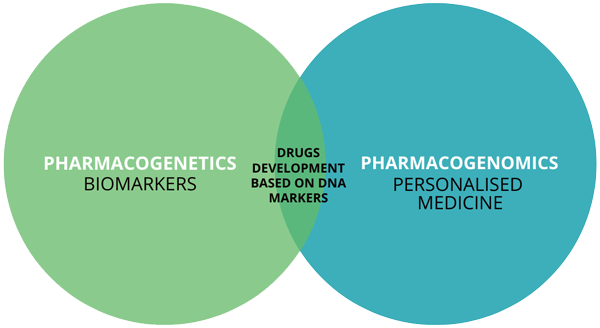
Lifestyle modifications
There are a variety of genetic tests one can take. And each one of these tests can tell you a variety of things about yourself, thus aiding in the management of lifestyle and prevention of lifestyle-related diseases. This can include:
Diet
A genetic test can analyse and give feedback on what diet and macronutrient ratio works best for you. This can help with weight loss and lowering levels of triglycerides. A reduction in weight and triglyceride levels can assist with the management and prevention of chronic illnesses like Diabetes.
Exercise
One can customise their own physical exercise regime to suit their genetic predispositions to injury (bone health), as well as capitalise on gains and time required for recovery.
Mental Health and Wellbeing
Assessing and analysing genes can help us understand and identify biochemical sensitivities toward stress and cognitive health (risk of developing cognitive issues such as Dementia, Alzheimer’s, etc). It can also aid in understanding one’s predisposition to addiction. The brain has a direct influence on the physiological state of the body, and so, by correcting and caring for cognitive health we can better the conditions of our physical state as well.
Summary
In essence, SNP and allele data host a variety of benefits, from dietary and lifestyle needs to disease risk. Modern medicine and technology can assist in understanding these complexities further. Clinicians, healthcare specialists and patients are able to use the genetic reports to better the future of medicine and health. As this field grows, so does the ability to personalise and tailor medication to individuals, thus increasing the effectiveness of treatment and prevention.
How do I Become a Functional Medicine Practitioner to learn more about Genetics?
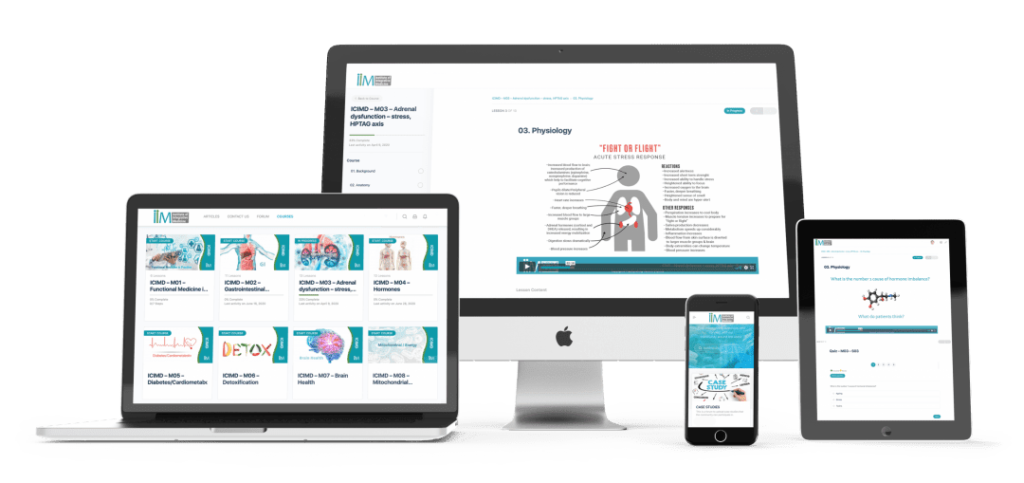
The Institute of Integrative Medicine is a global leader in the field of Preventive Medicine Education. We offer certified online courses helping you to take charge of your practice and improve the quality of life for your patients. Find out more about the courses we offer today!
